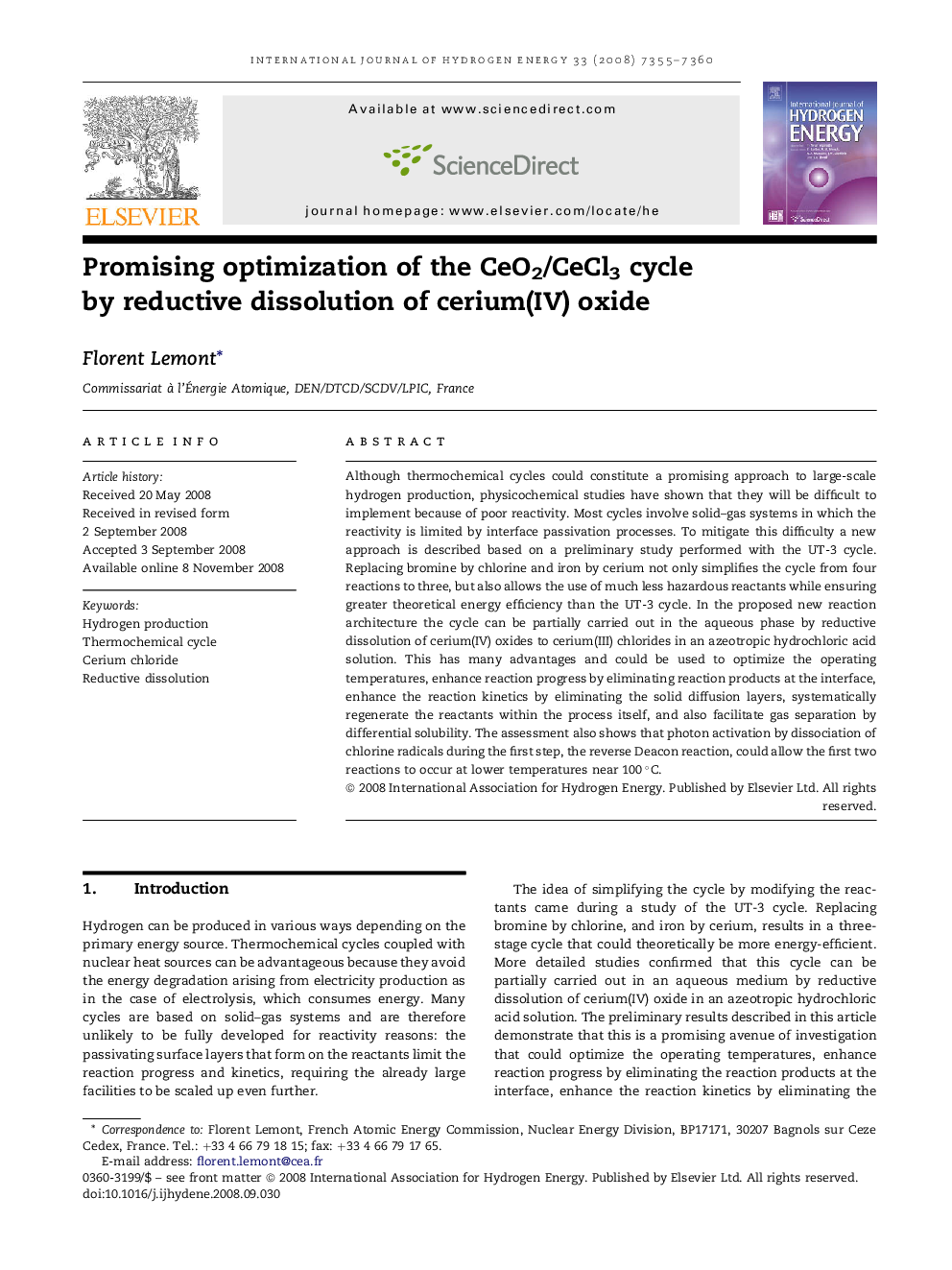| Article ID | Journal | Published Year | Pages | File Type |
|---|---|---|---|---|
| 1281329 | International Journal of Hydrogen Energy | 2008 | 6 Pages |
Although thermochemical cycles could constitute a promising approach to large-scale hydrogen production, physicochemical studies have shown that they will be difficult to implement because of poor reactivity. Most cycles involve solid–gas systems in which the reactivity is limited by interface passivation processes. To mitigate this difficulty a new approach is described based on a preliminary study performed with the UT-3 cycle. Replacing bromine by chlorine and iron by cerium not only simplifies the cycle from four reactions to three, but also allows the use of much less hazardous reactants while ensuring greater theoretical energy efficiency than the UT-3 cycle. In the proposed new reaction architecture the cycle can be partially carried out in the aqueous phase by reductive dissolution of cerium(IV) oxides to cerium(III) chlorides in an azeotropic hydrochloric acid solution. This has many advantages and could be used to optimize the operating temperatures, enhance reaction progress by eliminating reaction products at the interface, enhance the reaction kinetics by eliminating the solid diffusion layers, systematically regenerate the reactants within the process itself, and also facilitate gas separation by differential solubility. The assessment also shows that photon activation by dissociation of chlorine radicals during the first step, the reverse Deacon reaction, could allow the first two reactions to occur at lower temperatures near 100 °C.
